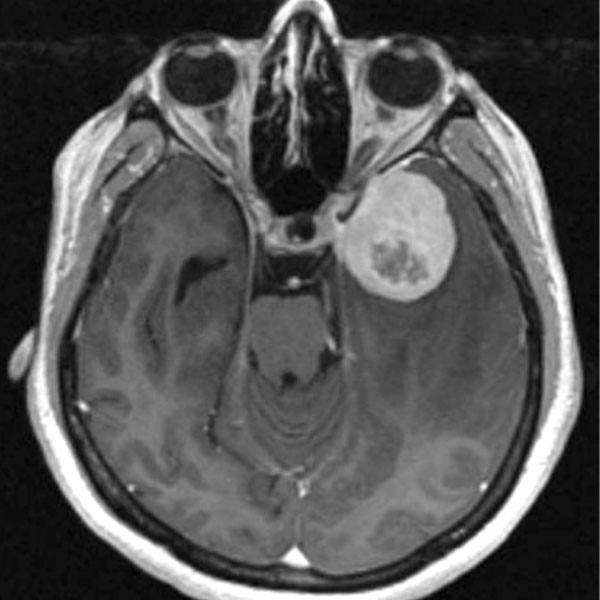-
Mayo Clinic Proceedings: In the Limelight, March 2021
Mayo Clinic publishes two peer-reviewed journals, accepting original research and related content from investigators around the world. Advancing the Science shares stories about research published in Mayo Clinic Proceedings, its sister journal, and many other English-language journals. In order to gain more visibility for all the research covered by Mayo's premier journal, we are going to reprint 'In The Limelight' each month. Written by Editor in Chief Karl Nath, M.B., Ch.B., it highlights several articles from that month's issue.
Analysis of Outcomes of COVID-19 Patients Managed at Mayo Clinic
Substantial heterogeneity exists in the type, severity, and developmental tempo of complications of COVID-19. Heterogeneity also exists in the reported outcomes including mortality in patients cared for with this condition.
In the present issue of Mayo Clinic Proceedings, O’Horo et al present their retrospective analysis of 7,891 patients with COVID-19 diagnosed and managed at Mayo Clinic sites from March 2020 through July 2020. In this population 11.3% required hospitalization, with 4.5% necessitating management in the intensive care unit (ICU); the overall mortality rate was 1.1%, with mortality rates rising to 7.1% and 11.9% in patients who were hospitalized and those managed in the ICU respectively.
A key finding in this study is that these mortality rates for patients managed in the inpatient, ICU, and outpatient settings are substantially lower than those previously reported in analyses of outcomes at other centers. Additionally, the mortality rates observed by O’Horo et al for hospitalized patients were lower than those observed in specific patient populations such as, for example, patients treated with convalescent plasma or remdesivir.
O’Horo et al offer several possible explanations for such improved outcomes. A salient consideration is that as the pandemic loomed, the leadership at Mayo Clinic convened assorted teams tasked with formulating relevant processes and protocols in responding to the pandemic; such teams brought together complementary expertise relevant to their assigned directives and responsibilities. Initiatives were coordinated overall by the SARS-CoV-2/COVID Enterprise task force, and relevant work streams involved: inpatient clinical trials, treatment review groups, outpatient clinical trials, critical care innovations, data science and registries, and remote monitoring. Operationalization of relevant work streams and initiatives were effected by the COVID-19 Data Governance Task Force, Treatment Review Panels (evaluation of hospitalized patients for specific clinical trials and therapies), and the COVID-19 Frontline Care Team (outpatient care and monitoring patients by telemedicine).
Such specifically targeted yet integrated approaches enabled the following: the provision of team-based expertise and specialties in patient care that were consensus-based; an enhanced availability of therapeutic options because of clinical trials and other possible therapies (COVID-19-targeted therapy was administered to 77.5% of hospitalized patients); the careful evaluation and monitoring of patients in the outpatient setting; and the forestalling of surge situations by ensuring requisite functional readiness and capacity.
O’Horo et al also discuss other considerations relevant to their findings. First, mortality rates for COVID-19 have generally tended to decrease with time and this may reflect the fact that initially in the pandemic, symptomatic patients were more likely to be tested and diagnosed, whereas later in the pandemic, testing more likely involved individuals without symptoms and thus those with more benign disease. Second, the initial spreading of the pandemic to the United States did not involve Mayo Clinic sites, thereby providing added time for preparation as well as insights acquired from the initial experience of the disease and ways it could be managed. Third, through telemedicine and other strategies the COVID-19 Frontline Care Team diligently monitored COVID-19 patients in the outpatient setting and thus was positioned to judiciously and expeditiously escalate the care of these patients should their condition require it. This timely analysis by O’Horo and colleagues imparts several valuable insights, the central one being that the coalescing of expertise, disciplines, and resources in a team-structured framework and in a consensus-founded approach can significantly improve the care and outcomes in patients with COVID-19.
O’Horo JC, Cerhan JR, Cahn EJ, et al. Outcomes of COVID-19 with the Mayo Clinic model of care and research. Mayo Clin Proc. 2021;96(3):601-618.
Promoting COVID-19 Vaccination
It is generally recognized that strategies which may restrain the COVID-19 pandemic involve effective vaccination programs, relevant public health policies, and personal behaviors such as masking and social distancing. For vaccination to be a successful strategy, the vast majority of members of a community should accept its value and necessity and, accordingly, be vaccinated. A challenge in the current pandemic is vaccine hesitancy, the latter representing a disinclination to be vaccinated because of either individual mistrust, uncertainty, or indifference regarding vaccination programs.
In the present issue of Mayo Clinic Proceedings, Finney Rutten et al discuss evidence-based strategies that may mitigate or resolve such hesitancy. These authors begin by pointing out that even prior to the occurrence of the COVID-19 pandemic, vaccine hesitancy was recognized as a mounting challenge to global health. The basis for vaccine hesitancy is then discussed including how vaccine attributes are perceived (efficacy, duration of protection, adverse effects); political factors (for example, accelerated, federally funded vaccine development and emergency use authorization may exacerbate concerns about vaccine attributes); and personal attitudes (for example, individuals with insufficient understanding of the gravity of the current pandemic or with a predilection for natural immunity rather than vaccination-conferred immunity).
Finney Rutten et al then summarize evidence-based strategies. Interventions at a policy and community level include, for example, making vaccination programs accessible in child care centers, schools, colleges, and Women-Infant-and Children programs. At an interpersonal level, the interaction between health care professionals and patients is a central one as patients generally value and heed the recommendations of health care professionals; presumptive, announcement-type communication by health care professionals is generally advised. Individual-level interventions refer, specifically, to health care providers and patients. As regards the former, examples of more effective communication are provided and the need for requisite education as regards COVID-19 vaccination is underscored; links to websites with such educational resources are provided in the article. Patients should be appropriately educated about COVID-19 vaccination, and information shared by health care professionals to patients should generally be provided in a positive rather than a negative manner. Interventions at an organization level are listed by the authors and these include standing orders, audit and feedback, reminders and recalls, and point-of-care prompts.
Finney Rutten et al are to be commended for highlighting the central challenge of vaccine hesitancy faced by national and international endeavors to restrain the COVID-19 pandemic and for synthesizing evidence-based strategies that may be pursued at varied levels to remediate this challenge.
Finney Rutten LJ, Zhu X, Leppin A, et al. Multi-level, evidence-based strategies to address COVID-19 vaccination hesitancy in clinical settings. Mayo Clin Proc. 2021;96(3):699-707.
An Update on Hyperkalemia
A comprehensive review on hyperkalemia is merited especially in light of two key developments in recent years. The first is that agents which inhibit the renin-angiotensin-aldosterone system (RAASi) are now established as therapeutically beneficial in such conditions as systemic hypertension, diabetic and nondiabetic chronic kidney disease (CKD), heart failure (HF), coronary artery disease, left ventricular dysfunction, and diabetes; and yet these agents pose a real risk of hyperkalemia, the latter complication not infrequently curtailing their use in such conditions. The second is that new potassium (K+)-binding agents are now available in clinical practice that may not impose the risk of intestinal ischemia and colonic perforation as does the older K+-binding agent, sodium polystyrene sulfonate (SPS); these newer agents, patiromer and sodium zirconium cyclosilicate (SZC), may also be more effective in treating hyperkalemia.
Palmer et al provide such a review in the current issue of Mayo Clinic Proceedings, and one which draws upon their search of the relevant PubMed literature between 2000 and 2019. K+ homeostasis is maintained by an interplay of internal and external balance. External balance enables K+ excretion (90% to 95% by the kidneys and the remainder by the gut) to match oral K+ intake; internal balance acutely safeguards plasma potassium in a normal range either by promoting intracellular uptake of K+ (via cell membrane Na+/K+-ATPase which is stimulated by insulin and β2-adrenergic agonists) when plasma potassium rises, or by allowing cellular egress of K+ into plasma as plasma K+ falls below normal levels. Renal K+ excretion is dependent upon glomerular filtration rate (GFR); distal nephron delivery of sodium, water, and impermeant anions; and aldosterone which promotes K+ excretion and Na+ reabsorption.
Palmer et al discuss the risk factors for hyperkalemia, including diseases (CKD, HF, diabetes) and drugs (RAASi, nonsteroidal agents, calcineurin inhibitors, β–blockers, heparin, among others). They also discuss how the predicted probability of mortality rises with increasing levels of plasma K+, and that this is further augmented by the presence of diabetes, HF, and CKD, especially so when these conditions are concomitantly present. The risk for hyperkalemia generally increases as GFR is reduced; however, reduction in GFR per se does not cause hyperkalemia only until the GFR approximates 30 mL/min because of adaptive increments in K+ excretion in surviving nephrons. As a corollary, hyperkalemia occurring when GFR is mildly or moderately reduced usually reflects the presence of some additional underlying factor such as the use of RAASi or other drugs that impair K+ homeostasis; hyporeninemic hypoaldosteronism (a complication of diabetes); tubular resistance to aldosterone; extracellular release of K+; or excessive K+ intake.
Palmer et al discuss the cardiac and other risks of hyperkalemia and how such cardiac risks may be modified, for example, either heightened by preexisting cardiac conduction abnormality or relative hypocalcemia, or more readily tolerated because of adaptation due to CKD. Palmer et al review the management of acute hyperkalemia, providing the rationale, onset of action, and efficacy for each modality. In addressing the management of chronic hyperkalemia, Palmer et al summarize the recommendations by various societies regarding therapy with RAASi as such therapy relates to normokalemia and hyperkalemia. The authors also summarize key findings from clinical studies assessing the efficacy of SPS, patiromer, and SZC, and with regard to each of these agents, their mechanism and onset of action, dosing, effects on other ions, and adverse effects. The authors underscore the potential role of patiromer and SZC in mitigating the risk and occurrence of hyperkalemia incurred by RAASi. Developed because of concerns regarding SPS, and representing a preferred therapy for chronic hyperkalemia in general, these newer K+-binding agents may enable, in particular, the continued use and beneficial effects of RAASi in an increasing number of conditions.
Palmer BF, Carrero JJ, Clegg DJ, et al. Clinical management of hyperkalemia. Mayo Clin Proc. 2021;96(3):744-762.
NOTE: These articles are also featured on the Mayo Clinic Proceedings’ YouTube Channel (https://youtu.be/92ah7uE-5Tk).
###
This article was originally published in Mayo Clinic Proceedings, Volume 96, Issue 3, Pg. 515-517, March 1, 2021.







